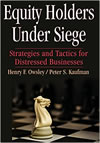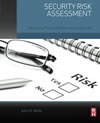All Articles
Aerosols - Aerosol Products
Investigation & Surveillance
All-Terrain Vehicles (ATV / UTV)
Law Enforcement
Appraisal & Valuation
Lubricants
Audio Forensics
Maintenance
Branding - Brand Management
Manufacturing
Business Development
Medical Malpractice
Commercial Diving
Medical Practice Management
Corrosion
Mining
Data Analytics and Visualization
Nursing
Dental - Dentistry
Obstetrics - Gynecology (OBGYN)
DNA (Deoxyribonucleic Acid)
OSHA
Education & Schools
Radiology
Engineering
Real Estate
Ethics / Ethical Duties
Regulations and Codes Standards
Failure Analysis
Remote Sensing Image / Satellite Data Analysis
Family Issues
Robots & Robotics
Feng Shui
Scuba Diving
Finance
Search Engine Optimization (SEO)
Fires & Explosions
Social Issues
Healthcare
Spirituality
Human Resources
Taxation
Hydrology
Toxicogenomics
Industrial Equipment
Travel & Leisure
Insurance Coverage Analysis
Warnings & Labels
International Trade
Waterproofing
More...

STATISTICAL-ANALYSIS-PAGE ARTICLES MAIN PAGE
. Contact Us if you are interested in having your work published on our website and linked to your Profile(s).
All Articles
Accounting
Insurance
Addiction Issues & Substance Abuse
Insurance Coverage Analysis
Alcohol, Tobacco & Other Drugs
International Trade
Archaeology - Archeology
Islamic & Sharia Law
Blockchain Information
Languages
Boating
Lubricants
Child Welfare
Marine - Maritime
Common Interest Development
Medical - Medicine
Computer Forensics
Medical Devices / Inventions
Counseling
Medical Malpractice
Crime Scene Investigation
Medical Practice Management
Criminology
Medicine
Crisis Management
Meditation
Damages
Meteorology
Discovery & Electronic Discovery
OSHA
Electrical - Electrocution
Pharmaceuticals
Employment
Power Supplies
Fall Protection Solutions / Confined Spaces Safety
Remote Sensing Image / Satellite Data Analysis
Foreign Affairs - Geopolitics
Scuba Diving
Forensics
Sexual Abuse - Molestation - Harassment
Healthcare
Social Issues
Healthcare Facilities - Hospitals
Statistical Analysis
Human Resources
Toxicogenomics
Industrial Equipment
Wilderness Emergency Medicine
Industrial Hygiene and Safety
Workplace Violence
More...
Featured Articles
There are no active articles here at this time. Please use the search bar, try another category, or contact us if you would like to contribute an article.
This Article is unavailable. Contact Us
Search articles by title, description, author etc.
Sort Featured Articles
Featured resources
Business Fraud : Know It & Prevent It
by James A. Blanco
Equity Holders Under Siege
by Henry F. Owsley, et al
Security Risk Assessment: Managing...
by John M. White
Follow us










